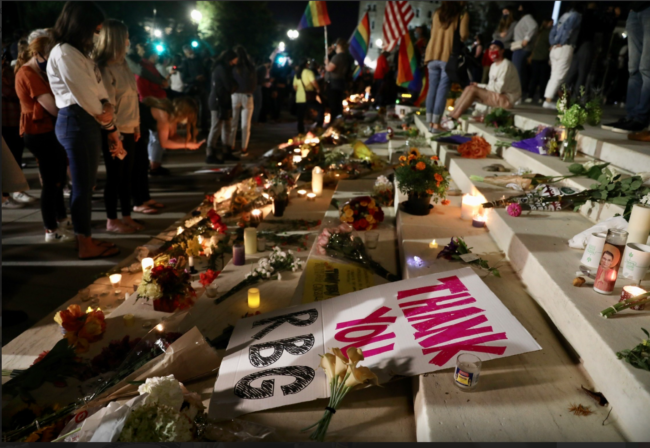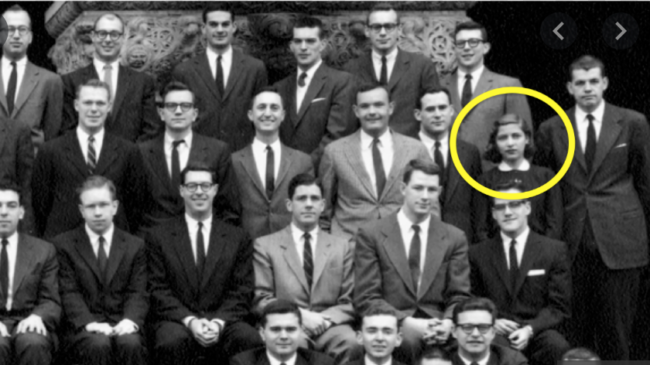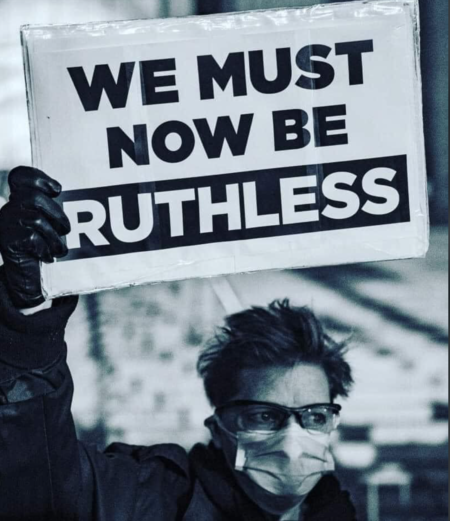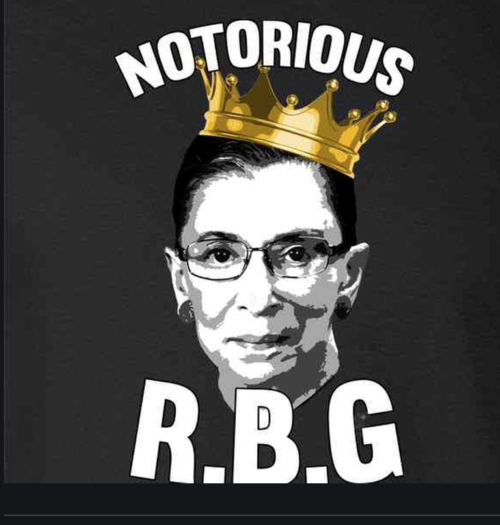I’ve been crying off and on since Friday night when these words lit up my laptop screen: RUTH BADER GINSBURG DIES!
I screamed at my computer, “No! No! No!” It felt like the world was coming to an end, or at least US democracy. In short order my iPhone was ablaze with text messages from grief-stricken friends and family.
The next day, wanting to honor Ruth, I googled articles about her and re-watched the documentary, RBG. Ruth came of age in the 1950’s when patriarchy was rampant.
As one of just nine women admitted to Harvard Law School, she and the other eight women were asked by the Dean, “How does it feel to be taking a place away from a man?”
Despite graduating with honors, Ruth was rejected by every law firm she applied to, simply because she was a woman. She turned to teaching, becoming a law professor, first at Rutgers and then at Columbia.
While at Columbia, Ruth joined the ACLU’s Women Rights Division, arguing six gender discrimination cases before the Supreme Court and winning four! Among her wins was a case allowing female students to be admitted to VMI (Virginia Military Institute) and a case that awarded a woman fair pay in an office where men were earning more for the same job.

Ruth enjoyed a storybook marriage with her husband Marty, shown supporting her during her Senate confirmation hearings to the Supreme Court, 1993
Ginsburg had a reputation for staying up half the night, frequently not retiring until 4 AM. Her painstaking research accounted for her long hours. She advanced women’s rights, one case at a time, referring to her method as “like knitting a sweater.”
In court, Ruth cleverly framed her arguments as a story, weaving a spell-binding narrative of the circumstances that made her client a victim of gender discrimination. While her courtroom arguments were delivered in a calm, respectful manner, her Supreme Court dissents were blistery, accompanied by donning one of her trademark “dissent collars.”
In her later years Ruth became a feminist icon, dubbed the “Notorious RBG,” which spawned an industry of RBG mugs, T-shirts and related merchandise. She seemed to enjoy this playful take on her personality.
Now RBG has left us, and we’re terrified of having the Supreme Court turn into a pawn of the White House, taking away abortion rights, voting rights, gender discrimination and more.
We considered Ginsburg our savior. But wait, is this thinking misguided? It is according to the writer, Rebecca Traister, who writes about RBG in “The Cut:”
The fate of American democracy and the planet should never have rested on this one woman’s small, old shoulders.
This is what happens when the government fails, when the safety nets that have been slashed for years are gone . . . . . In an absence of leadership, of functional guidance, we’re all left to imagine that the decisions of other individuals are what is going to save or damn us.
If we follow Traister’s thinking, RBG’s death can be a wake-up call where we recognize that Congress is too embedded with corporate powers to work for us and that it has allowed our safety net to slip away, borne out by all the people left hanging due to COVID. Ultimately it’s people power that will rescue our barely-there Democracy.
Traister’s article offers this charge:
We have to address what is really broken, which is not just our hearts and our spirits: It’s the frail systems in which Ruth Bader Ginsburg wanted so badly to believe. She’s gone and it is up to us to undertake the demanding revolutionary work of remaking them, this time stronger and more just.
Let’s awaken our inner Ruth’s and get to work! Cry when the tears come, but resist!
RESIST: Ruth Evokes Sisterhood In Scary Times






